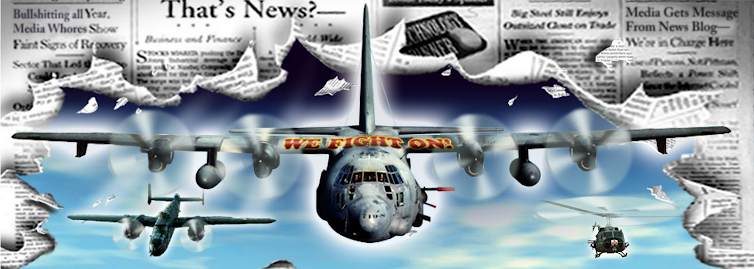 Charlton Heston—1923-2008
Charlton Heston—1923-2008
We saw the passing of legendary Hollywood actor Charlton Heston this past weekend at the age of 84. He was one of the very last of the remaining mega-stars of Tinseltown's studio-era with a career spanning 53 years, from his initial film appearance in 1950's Dark City all the way through to his 2003 voice work for an animated “Ben Hur”.
He was by all accounts a true professional in his craft—insisting on performing much of his Moses role in 1956's “The Ten Commandments” barefoot even though his feet would not be seen and he risked injury for the rugged exterior work, and spending four weeks learning how to drive a chariot (from the legendary stuntman Yakima Canutt) so that at least 80% of what you saw of him in the chariot races in “Ben-Hur” was actually him being whipped about the custom-built arena at Italy's Cinécitta Studios.
There were few actors of his time—a long time at that, who participated in as many landmark films as Heston. From the blockbusters like the eye-popping “Commandments” and “Hur” and the four-sequel spawning “Planet Of The Apes”, to his unlikely turn as a Welles-ian hero in the Hollywood giant's last great exposing of celluloid—1958's closing of the book on Film Noir, “Touch Of Evil” (Playing a Mexican policeman!). Heston's specialty was playing motivationally uncomplicated leads on single-minded quests. His job was NOT to do depth, but rather, to convey strength while searching. His imposing physicality helped with this. An almost comic-bookishly square jaw and a strapping six-foot-three of swimmerly sinew, Heston boasted the easy athleticism of his peers Burt Lancaster and Kirk Douglas—albeit without their same ability to switch from scenery-chewing to delicately subtle actorly shadings.
The Heston performance range was not wide. But deployed properly, playing piousness, blunt-force heroism and overweening anguish, he could be magnetic onscreen with his easy physical attractiveness holding the eye while his stentorian voice anchored the ear.
There was a certain vainness to his onscreen presentation. Look at the way he seems to consciously flex his bare arms in the in-cabin master shots in 1959's “The Wreck Of The Mary Deere”. It borders on an upstaging his co-star, the God-like leading man of the previous three decades, Gary Cooper. But it comes off as harmless fun because it was Heston—an actor so damned comfortable in his well-toned body that you forgave him for his preening excesses and his occasional over-willingness to share it with the viewer.
He was not subtle. He couldn't be and filmgoers in turn didn't ask of it from him. Broad, rough strokes was how he painted his characters on-screen. Save for his measured take in the post-modern western, 1968's Will Penny, a subtle character shading rarely seen from Heston. Unglamorous and just a touch a-moral, it was in my mind perhaps his finest, most actorly performance on film.
He was bankable. A strong-jawed pro who wouldn't “muck up” things with high-falutin' emotional shadings, and while he wasn't a subtle craftsman, he was a workman—filling out a career with gobs of work when called, from the aspiring “Agony And The Ecstasy” and El Cid” to the gummy, plain popcorn of “Earthquake” and “Airport '75”.
He simply entertained. And in his later years, as that easy physicality faded, he played stern-eyed patriarchs onscreen and lent his still powerful voice to voice work in narrations.
Of course, Heston's being an unsubtle man would manifest itself in his life outside his performance persona. In the sixties, he was an open and proud Hollywood Liberal, marching in Dr. King's 1963 March on Washington and espousing many of the feel-good liberal ideals of the time. And like folks like Frank Sinatra and Dennis Hopper, Heston would shift radically from Liberal to Right Wing supporter and apologist as exidenced by his over-the-top (Hey, to thyself be true...) vocal backing and presidency of the National Rifle Association from 1998 o 2003. It was at the 2000 NRA national convention where he famously waved a blunderbuss overhead and fairly growled while nearly spitting bits of curtain and set materials that the Clinton administration would have to take away his Second Amendment rights “From his cold, dead hands”.
Sadly, it is that last, unfortunate, broad play to the audience and cameras that many will remember him for—a man rushing backwards as the world pushed ahead. He would utter a variety of retrograde statements as the roles grew thin and the star began to wane in brightness. Bitter remarks about affirmative action, gun-nuttery, the first Gulf War and an embrace of the worst elements of the wingnut religious right would follow, hopelessly skewing the perception of the man as a whole.
A debilitating bout with Alzheiemer's Disease would ironically be the thing that claimed the uncomplicated Heston's life this past Saturday evening.
Film buffs will remember his booming line readings of such classic bits of scriptwork:
“You blew it up! Ah, damn you! God damn you all to hell!”
Soylent Green is made of PEOPLE!”
“You gave me this staff to rule over scorpions and serpants. God has made it a staff to rule over kings”
and of course...
“Take your stinking paws off me, you damn, dirty ape!”
As I said...he was entertaining. An annoying political changeling, but still in that classic popcorn-y way, an entertaining performer.
Let us look to his work for what it was—fun—and understand his politics for what it was too. Retrograde yes, but in the end as much a goofy show as his most excessive performances.
Bid adieu to a star and offer condolences to his family and loved ones.

Tuesday, April 8, 2008
Of Parting Seas, Chariot Races, Buried America, and Guns That Shall Not be Pried.
Subscribe to:
Comment Feed (RSS)




|